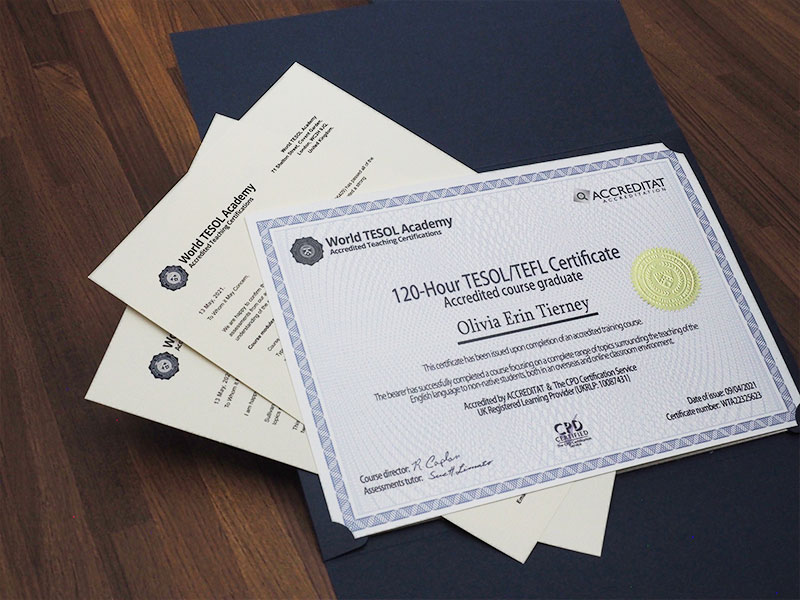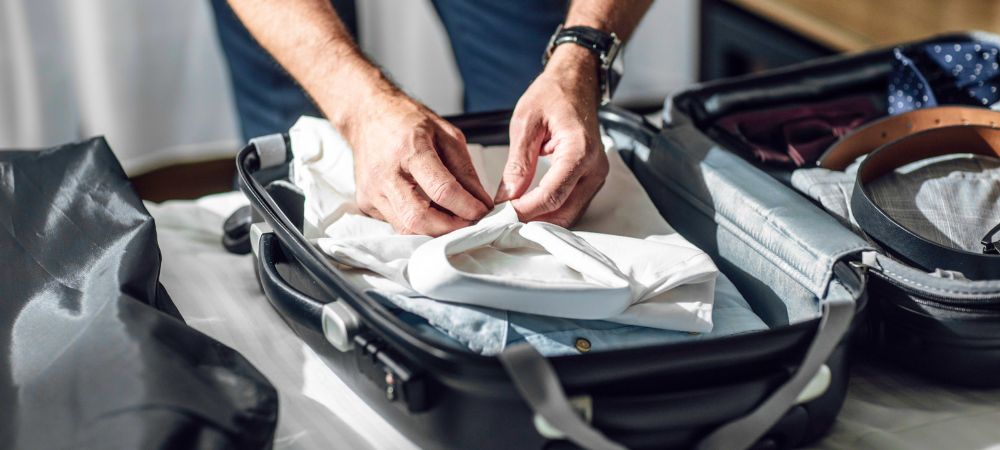
Essential Guide: What to pack for Teaching English Abroad
Moving to a foreign country to teach English can be a life-changing adventure. You’ll not only gain experience from living and teaching in another country, but you’ll meet a lot of interesting people and hopefully make friends for life.
But before you can start on this teaching journey, you’ll first have to conquer one of the most dreaded parts of traveling. That’s right – it’s packing time.
Most people have some experience with traveling, whether it’s domestically or internationally. Going on holiday for a week or two to a nice and sunny destination often doesn’t require you to pack much besides your swimwear, towel, and flip-flops. Moving overseas to teach, however, often requires some additional planning and preparation. Knowing what to pack (and what not to pack) can be a bit difficult if it’s your first time going abroad to teach.
To help you get started, the team at World TESOL Academy has put together a list of things we think that you should pay extra attention to when preparing to go overseas to teach English.

1. Proper paperwork
Making sure you have the proper documents with you on your trip is one of the most important things to keep in mind. Although it might not be the most fun thing to pack before setting out on a new adventure, it certainly should be one of the core items on your packing list.
If you’ve traveled before, then you’d probably agree that documents like your passport, visa, insurance papers and airline tickets are core items to bring with you. However, you are now not only traveling abroad, you are actually about to start a potentially life-changing journey and possibly a new career. To be able to do this, you should first make sure that you have also packed the key documents needed for starting a teaching career abroad.
In addition to your travel documents, it’s also crucial that you remember to bring all of your work-related documents.
These documents could include:
- Passport (with at least 1 year of validity)
- Visa papers
- Work permit (if needed before your arrival)
- Degree certificates (or any other education certificates)
- A criminal background check (useful in some countries)
- And most importantly your 120-hour TESOL/TEFL certificate.
The last thing you want is to get on your flight only to realize that you forgot to pack the things that will let you teach English abroad.

Getting your TESOL/TEFL certificate: To teach English abroad you’ll need to have an accredited and recognized 120-hour TESOL/TEFL certificate.
If you have a hard copy of your certificate you would certainly want to pack this carefully and bring it with you. At World TESOL Academy, we make sure that all of our hard copy certificates come with a protective folder to help ensure that you can safely bring them overseas without bending or damaging them.
If you haven’t enrolled in the course you can do so here:
.
It’s also important to ensure that you prepare sufficient funds for your stay abroad. Getting set up in a new country often requires some initial funds to cover things such as rent and deposits for accommodation, local transportation, etc. Having this prepared beforehand can help you get a smooth and worry-free start to your stay.

2. Electronics – Laptop, tablet, and smartphone
With today’s increasingly powerful and versatile smartphones, it might be tempting to leave your laptop behind. This could be sensible if you’re just going on a short trip. But there’s no denying that your laptop will be one of your most powerful tools while living and teaching abroad. Having a laptop can help you plan your lessons and let you look up information more easily. It’s also a great tool to have when taking care of tricky daily life errands.
You can alternatively also bring a tablet if you prefer this over laptops. Whichever you prefer, having an extra device such as a laptop/tablet in addition to your smartphone is a good backup in case you’re unlucky and an accident was to happen (and they do happen, sometimes when you least expect it).

3. Ergonomic and safe backpack
While most people usually have an old backpack laying around at home, these backpacks are often not designed with ergonomics and security in mind. Moving to a new country often means that you’ll be doing a lot of traveling and moving around.
Whether it is commuting to your workplace or just sightseeing, having an ergonomic and safe backpack can definitely be a lifesaver. The last thing you want is to start your journey with a pair of sore shoulders, a bad back, or to find that your electronics have been damaged.
Many new backpacks also offer nice safety features like locks, compartments for laptops, and some also come in slash-proof materials. Investing in a bag like this can help give you some peace of mind, especially when moving around in busy areas.

4. Portable charger
This is an item that has become more and more common throughout the last few years. As smartphones have become highly integrated into our daily lives, it also means that the need for longer-lasting phone batteries is also increasing.
Whether you are paying for things, looking up directions, using online dictionaries or just simply browsing the internet, having your smartphone charged and ready to be used is one of the most important things people pay attention to in their daily lives.
To overcome the limitations of chargers and avoid the stress of not knowing when you’ll be able to charge your smartphone next, getting yourself a portable charger can be one of the best cheap investments you can do to keep your daily life as problem-free as possible. The last thing you want to happen is to be caught with a low battery when you need it the most.

5. Appropriate clothing
Depending on which country you’re going to and what type of school you are going to teach at, it can be good to keep in mind that there may be local dress codes in place. To be on the safe side, it is recommended to pack a few days’ worth of work clothes along with your regular clothes.
These could include items such as:
- Collared shirts
- Trousers or a modest skirt/dress
- A plain tie
- Formal shoes
- A headscarf (in some countries)
While you most likely won’t need a full suit, having some professional clothes with you could be useful to make sure that you set a good impression with your new school. Being overdressed is always better than being underdressed.
One thing that is easy to forget about is your shoes. Having proper shoes with a closed toe is usually a must, so leave the sandals at home and pick up a pair of comfortable dress shoes before you leave.
If you’ve already secured a job before leaving then you could check with your school regarding their dress code. Each school might have their own policies in place. If you’re unsure about what clothes to take, you could browse our ESL interview guide: How to prepare before an interview for more details.

6. E-reader
Being an English teacher means that you are a provider of knowledge. Being passionate about helping and teaching others is great, but it is also important to recognize one’s own needs and wants.
There might be days when all you want to do is to spend some quality me-time while soaking up the local atmosphere at a cozy café or at your favorite beach bar. Whether you’re looking to brush up on your language skills or just looking to escape into your favorite novel, having an E-reader with you can definitely help you manage that work & life balance that so many of us struggle with.
Having access to thousands of books just one click away makes an E-reader a great tool for recreational purposes. A great bonus feature is that you can also use it for class preparation, such as viewing pdf files of your lesson plans.

7. Medication
Buying basic over-the-counter medications, such as pain relievers and stomach pills at your teaching destination will usually not be an issue. However, having to deal with potential language barriers and different medication names overseas, it might feel more reassuring to first buy medicine in your home country and bring it with you.
If you take any prescription medicine then you would want to contact your doctor to see how long of a prescription they could supply for you. You would also want to check if this medicine is available in your destination country. If it’s not something that can be prescribed locally then you could check with your current doctor to see if there are any alternatives that you could explore instead.
💡 Important note! Please keep in mind that some countries might have restrictions on what you’re allowed to bring (even over-the-counter medicine), so make sure you first check what’s allowed and what’s not.
If you do take prescription medicine, make sure that you also take the prescription which clearly displays your name on it.

8. Toiletries
Depending on your needs and habits, this is one of the categories that can vary the most. But just as with medication, bringing an initial setup of basic supplies like toothbrush, toothpaste, soap, deodorant, shampoo and conditioner can be useful when trying to settle in upon arrival. After you’ve managed to set everything up after arriving, you’ll most likely notice that finding these items locally won’t be a big issue.
What could be good to pay extra attention to is if you have special products that might be difficult to find at your teaching destination. Trusted skin routine products are one category that could be worth bringing, depending on how sensitive your skin is.
The downside is that toiletries can be quite heavy, so if you are reaching the weight limit of your bag or if you’re feeling real adventures, then you might want to explore the local options instead.
Final thoughts
If you’ve made it this far, then it’s more than likely that the thought of teaching English overseas has at least crossed your mind. Before you do decide to go, you should first make sure that you’re fully prepared for what lies ahead. A good start would be to plan what to bring with you on your new adventure. By carefully considering what to bring, you can make sure that you’ve maximized your chances of having the best possible start on your English teaching journey!
If you are ready to start your teaching journey abroad, don’t forget to get your 120-hour TESOL/TEFL certificate!
You might also find it useful to browse our ultimate resume guide for English teaching jobs.




Phones. Many Asian countries sell dual, even triple Sim phones, if you are considering new phone get one when you arrive.
In Thailand Samsung is readily available and AIS is a very good carrier, you can top up on line using a credit card and the big plus is that the account stays active for 12 months as opposed to UK and European Sims which expire after 3 months of no use..
Good luck.